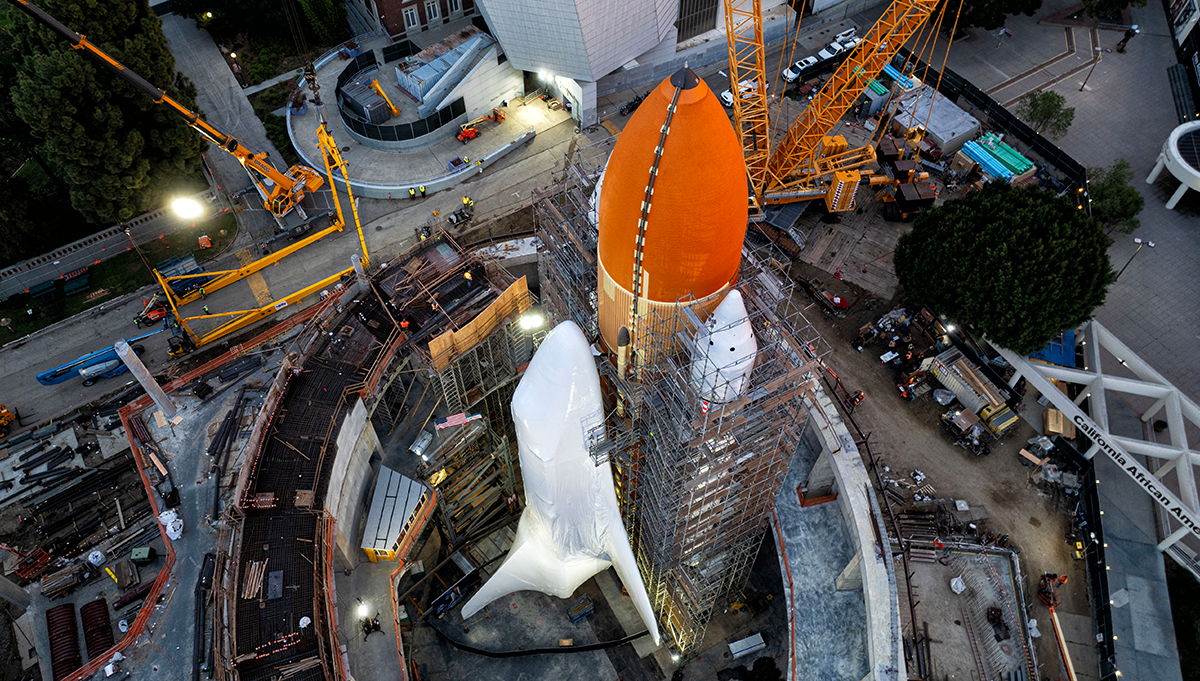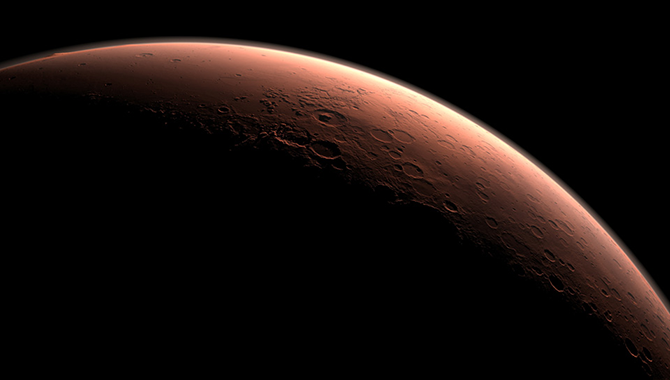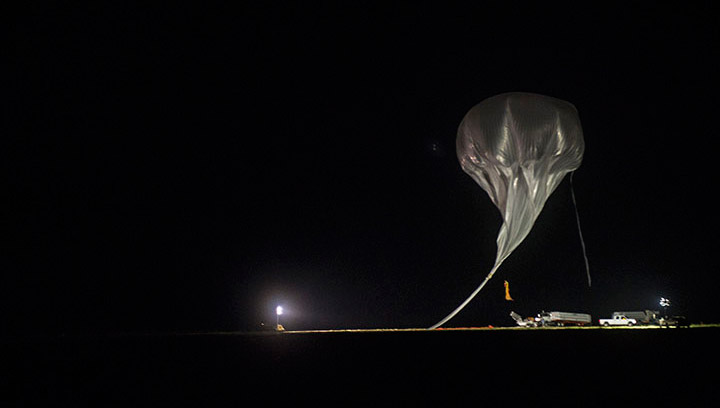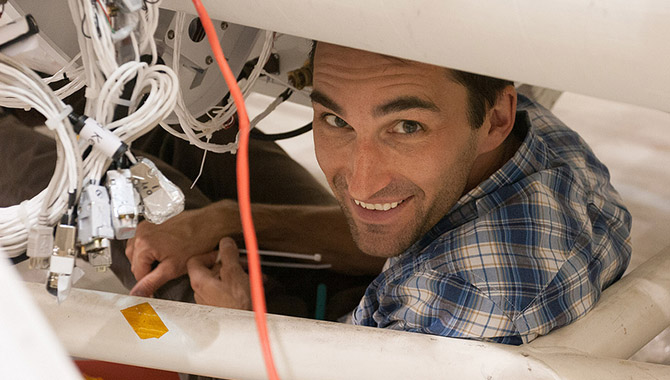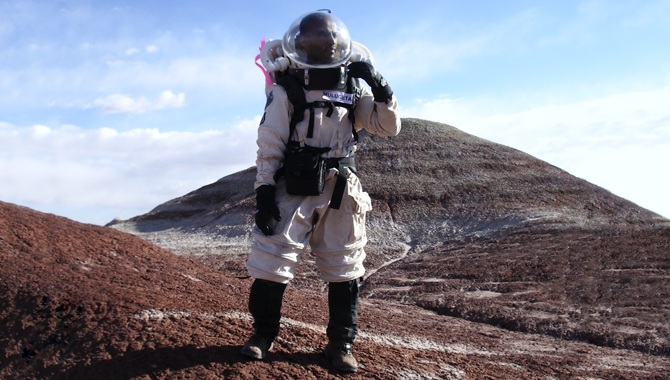
Artist’s concept of the Space Launch System rocketing into space.
Image Credit: NASA / MSFC
On October 3, 2014, young professionals in the international space community sparked a conversation about the future of human space endeavors.
The 2014 International Astronautical Congress in Toronto, Canada featured a Young Professionals Programme that included several virtual forums, allowing those who could not attend in person to join key discussions affecting their community. The goal of the Human Space Endeavours Young Professionals Virtual Forum was to engage the audience, both online and in the auditorium, through a mix of presenters from industry, academia, and elsewhere.
The speakers examined the issue from different angles. The first three focused on the hardware needed to enable human spaceflight in the coming decades as well as potential deep space destinations.
Josh Hopkins, Space Exploration Architect from Lockheed Martin, shared a vision of what human spaceflight might look like over the next 25 to 30 years. He discussed immediate plans for the Orion Multi-Purpose Crew Vehicle, which is being built by Lockheed Martin for NASA, including the test flight proposed for Dec 4, 2014. He then covered more far-reaching human spaceflight possibilities involving the spacecraft. “Going to the moon is a thousand time farther than astronauts have flown in our lives,” he reminded the audience. He went on to discuss critical stepping stones, such as manned missions to the moon, asteroids, and the moons of Mars, before reaching the ultimate goal. “Eventually, we want to prove that we can get to Mars.”
Joel Carpenter, a propulsion engineer from Boeing, discussed the work his company is doing for NASA to advance the potential for human spaceflight with the Space Launch System (SLS). Carpenter began by highlighting some of the notable past accomplishments in space. “Keep in mind,” he said, “none of these would have been possible without international cooperation.” He then focused on the specifics of the SLS, noting, “We’re making great progress at Boeing for the Exploration Mission-1.” This mission, planned for 2017, will combine the SLS and Orion for the first time.
Thibaud Verschoor, an aspiring aerospace engineer from the Delft University of Technology, presented concepts from a paper he co-authored with fellow students on Adrestia: First Manned Flyby Mission to Mars. “Our vision is to inspire humanity by taking the next steps toward setting a footprint on Mars,” said Verschoor as he walked the audience through the team’s conceptual mission. The team calculated the necessary budget as well as specifications for trajectory, hardware, and environmental and life-support technologies that could potentially facilitate a crewed Mars mission.
The next two speakers focused on human spaceflight analogs. Such initiatives attempt to replicate conditions crews may face in order to better understand what is needed to keep them healthy during deep space travel.
Anne Caraccio, a chemical engineer from NASA’s Kennedy Space Center, discussed findings from a four-month Mars analog mission conducted as part of NASA’s “Trash to Gas” project. The goal was to develop a reactor system that could convert participants’ waste into methane to be used as propellant. Ultimately, the reactor itself consumed all of the power generated by the garbage-to-fuel effort. But that was not necessarily bad, Caraccio explained. “The good thing is you’re taking your trash, which is a problem, and you’re reducing it. You’re freeing up volume and then you’re creating something useful with it.”
Andrey Kostylev, a graduate of the International Space University, looked at different means of reducing the costs associated with human spaceflight analogs. “The main cost comes from construction and fabrication, not operational expenses,” he said. He examined three modular options that could be used to conduct analogs and concluded that using off-the-shelf modular materials in creating analog habitats could significantly reduce costs and improve ease of use.
The final speaker was Alan Angleman, Staff Director of the National Research Council (NRC) Study on Human Spaceflight. He discussed the NRC’s recent report on potential pathways to expand human space exploration, stating, “Getting [to Mars] will require overcoming unprecedented technical risk, fiscal risk, and programmatic challenges.” According to Angelman, the only way for the U.S. and its international partners to advance human space exploration beyond low Earth orbit is to agree upon a clear path forward and gain the ongoing support of government. “Without consensus and discipline,” he said, “it is all too likely that the potential of the Space Launch System will be wasted…and the horizons of human existence will not be expanded.”
Young professionals in attendance, both in person and online, had the opportunity to converse with the speakers through a question and answer session following each presentation.
Learn more about the Young Professionals Programme at the 2014 International Astronautical Congress.


